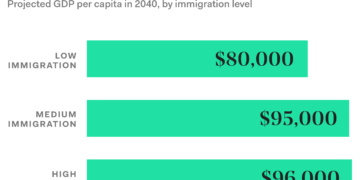[ad_1]
Most of us who’re
involved with environmental points know that there’s a robust correlation
between inhabitants progress and environmental harm. But too few settle for that
immigration per se results the surroundings. Many argue that crossing a border
doesn’t imply there are extra shoppers or producers of waste – though the
pure aspiration for a better way of life, which is commonly a significant
motive for migrants – implies an elevated affect on the surroundings by the
migrant.
The present warmth wave in
the northwest U.S. suggests that rather more consideration needs to be paid to the
environmental penalties of large-scale immigration – the driving power
behind inhabitants progress within the U.S. The warmth wave within the Northwest comes at a
time when the area’s water sources are being depleted.
Water is important to life and has lengthy been a flashpoint for battle. The present tensions between Ethiopia, Sudan, and Egypt over a brand new dam on the Nile in Ethiopia demonstrates consciousness of that reality. Concern within the U.S. Midwest over the dropping water desk within the Ogallala aquifer is one other instance. It’s true that extra potable water may be extracted from salt water, however at nice power value and unfavorable affect on ocean life as salinization will increase. It is usually true that, along with curbing immigration-driven inhabitants progress, the US should finish inefficient and profligate water utilization practices.
Essentially, as
inhabitants will increase, water per capita decreases. With that in thoughts, all who
settle for accountability for our affect on future generations ought to assume twice
about accepting the arguments for growing immigration as a method to take care of
or enhance inhabitants measurement. Decreasing inhabitants enhance, or permitting the
inhabitants to lower, is a banner that needs to be raised by all involved
environmentalists.
[ad_2]
Source link































